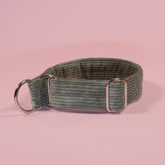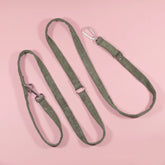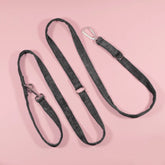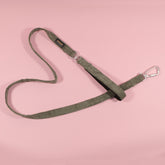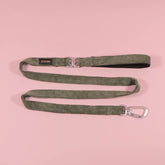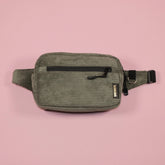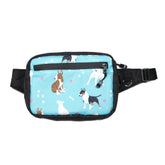Walking with a dog in winter - how to take care of your pet's comfort?
Learn the 5 most important rules!
Every guardian should know how to take care of the comfort and health of their pet during winter walks. Dog clothes? Paw balms? We suggest what you must remember when preparing for a winter walk!
Not all dogs like winter. For many of our charges, snow and frost are a sufficient excuse to limit hiking to a physiological minimum. Does this mean, however, that low temperatures preclude productive walks? Nothing more wrong! The key is to keep your pet comfortable when hiking in the cold. Below you will find the most important rules of a safe winter walk that every guardian should remember!
1. Adjust the length of your walk to weather conditions
For many of us, long walks are synonymous with valuable time spent with the dog. However, when the temperature drops below freezing, snow appears and puddles begin to freeze, it is worth considering shortening your usual hikes.
In winter, dogs are exposed to hypothermia, and in extreme cases, even to hypothermia. So make sure that your walks are valuable, but not necessarily very long. Watch your pet and try to adjust the length of the walk in the cold to its capabilities and needs.
2. Choose the right clothes for the dog that needs them
Clothes for a dog are often associated with unnecessary disguise of the pet with the vanity of the guardian. Meanwhile, many dogs need protection against the cold in winter, which is provided by comfortable and well-made clothes.
When is it worth considering buying a dog sweatshirt? Pets who:
- they have no undercoat (e.g. Bull Terriers, French Bulldogs, and Basenjis);
- they have no coat (e.g. Mexican naked dog or Chinese crested dog);
- are recovering from long-term treatment or procedures;
- are older or emaciated;
- they do not tolerate low temperatures well.
It is worth buying only such clothes for dogs that are functional. They should fit well to the anatomy of the animal and be made of high-quality materials that actually protect the pooch from the cold.
3. Do not forget about paw care
 In winter, dogs' paws are particularly vulnerable to injuries and irritation. Low temperatures favor the drying of the pillows, which leads to their cracking under the influence of various factors. Snow, sharp pieces of ice or road salt cause discomfort and even pain to the animal. That is why at low temperatures you need to take special care of the safety of dog paws.
In winter, dogs' paws are particularly vulnerable to injuries and irritation. Low temperatures favor the drying of the pillows, which leads to their cracking under the influence of various factors. Snow, sharp pieces of ice or road salt cause discomfort and even pain to the animal. That is why at low temperatures you need to take special care of the safety of dog paws.
What can you do?
- Lubricate the pads on the paws with special balms or ointments available at the pharmacy. Before the walk, protective ones will work, and after them moisturizing and soothing ones.
- Always check that there are no lumps of snow left between your dog's toes.
- When you get home, wash your paws with lukewarm water in the bath or shower.
Dog shoes are becoming more and more popular. If you decide on them, be sure to choose the waterproof and non-slip ones. Also remember about the exact size adjustment. Not all dogs are able to accept walking in shoes, so do not put them on by force.
4. Pay attention to the signals your dog's body is sending you
Just like people, dogs in the cold can freeze solidly and even suffer hypothermia! That is why you need to learn to read the signals that show that it is time to end the walk and return home as soon as possible to warm the pooch.
What behavior should cause you concern?
- raising paws higher than usual;
- body tremors;
- slowed breathing;
- ruffled hair;
- an attempt to complete the walk (stopping or changing direction towards home).
If you notice any of the above symptoms in your pet (or - even worse - several of them at once) do not hesitate and end your journey as soon as possible!
5. Take care of proper activity on a walk

In winter, walks with the dog often have to be shortened. Remember, however, that this does not release you from the obligation to meet the natural needs of the animal! A quick physiological walk around the block is definitely not enough. Your journey does not have to be long, but it is important that it is attractive and productive for the dog.
For this purpose, it is worth providing the pet with various olfactory games and often modifying the walking route. Remember that mental effort can tire your dog more than physical effort! Nevertheless, it is not worth giving up the movement. The more it is, the less chance that the dog will freeze. So bet on shorter, but more active!
Summary
Walking the dog on frosty days is a challenge for the guardian! It is worth remembering to take special care of the needs of the pooch when winter is the hardest. Try to make your walks shorter but more varied. Also, don't be afraid of clothes. Dog sweaters or good quality sweatshirts will protect your friend from the negative effects of frosty weather!













